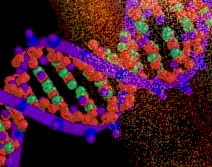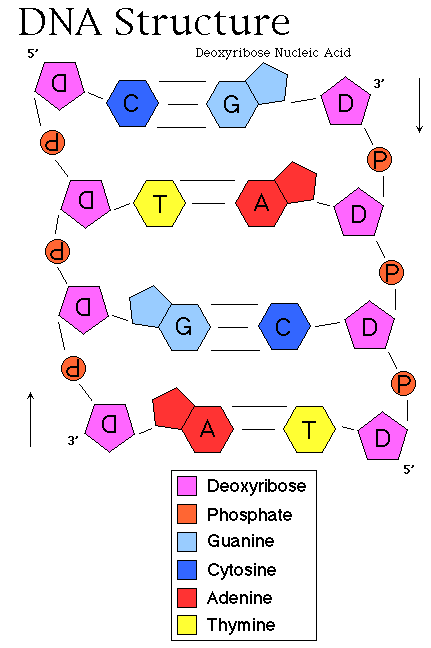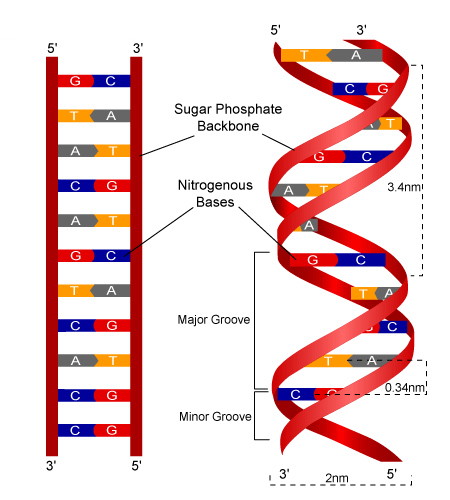DNA Structure


DNA is short for deoxyribose nucleic acid
The structure of DNA is a double helix. In other words, it is a double stranded molecule that twists like a spiral staircase. The outsides of the molecule, the railings of the staircase, are made of deoxyribose sugars alternating with phosphates. This part of the molecule is sometimes called the "backbone". Note that the strands run in opposite directions (this is indicated by the 3-prime (3') and 5-prime (5') notation), and are referred to as "anti-parallel".
The inside of the molecule, the "steps" of the staircase, are made of the nucleotide bases Cytosine, Guanine, Adenine, and Thymine. C bonds to G by three hydrogen bonds. A bonds to T by two hydrogen bonds. A and G are double ringed structures called "purines". C and T are single ringed structures called "pyramidines". These nucleotide bases are the information carrying part of the molecule, and it is the differences in the repeating sequence of Cs, Gs, As and Ts that make us all unique.
To replicate, the DNA molecule unzips along the hydrogen bonds. The single stranded templates dictate which bases get laid down. In this way, one DNA strand can become two.


If you can find it, be sure to show your students "The Race for the Double Helix" starring Jeff Goldblum.